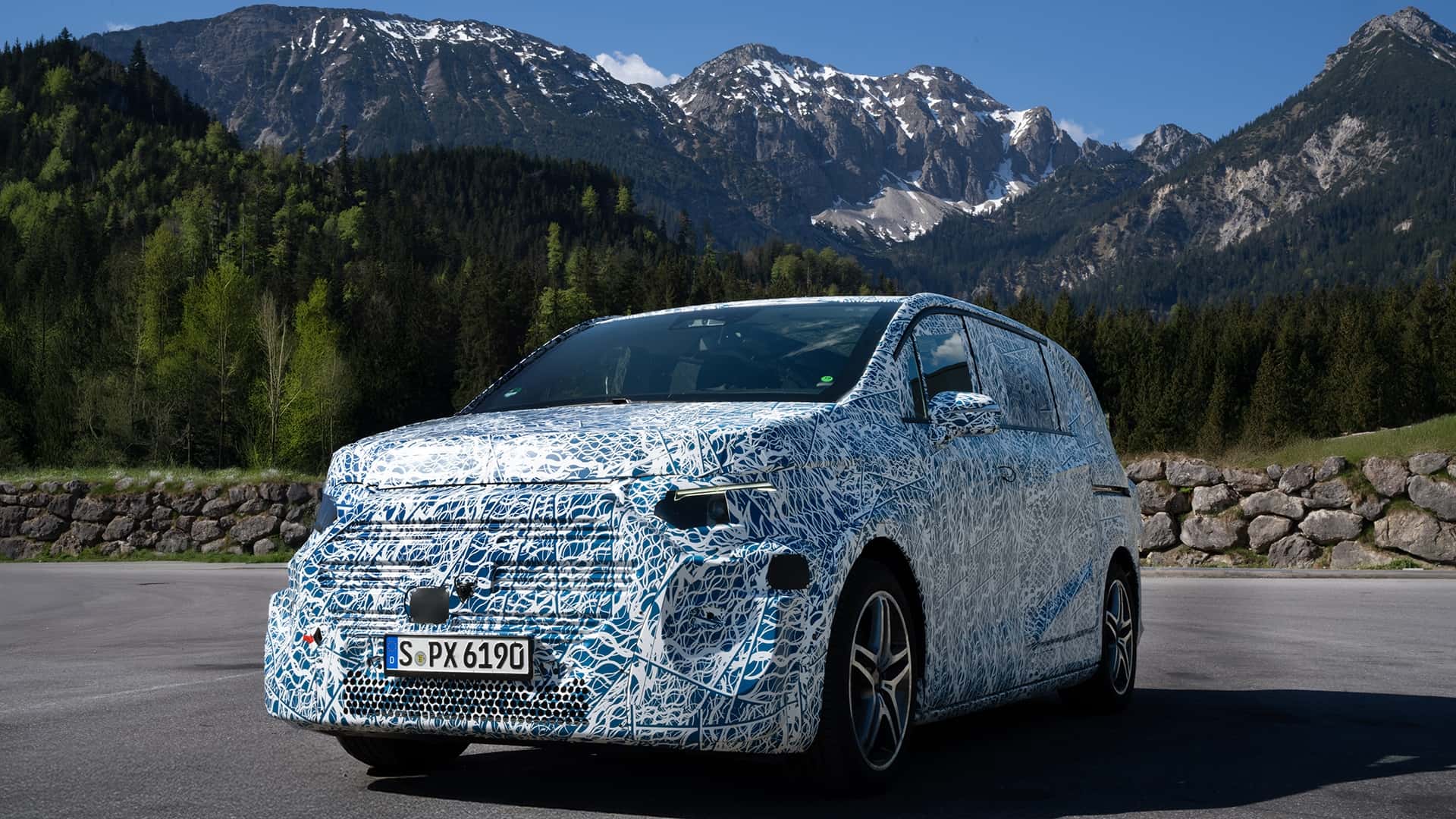A New Era for Mercedes Vans
Mercedes-Benz is making waves in the commercial vehicle segment with its upcoming VLE model, which promises to set a new benchmark for range and efficiency. The company recently showcased the capabilities of a VLE prototype by driving it from Stuttgart to Rome, highlighting its impressive performance and long-range capabilities.
The journey covered 677 miles (1,090 kilometers) and required just two quick charging stops, demonstrating the vehicle’s potential for long-distance travel. The route included challenging mountain passes over the Alps, where Mercedes claims the rear-wheel steering system made the vehicle feel more maneuverable around tight turns. Throughout the trip, the air conditioning was kept on at a comfortable 71.6°F (22°C), further emphasizing the VLE’s practicality and comfort.
Although Mercedes has not provided detailed efficiency metrics for the trip, the company states that this was one of many validation routes used to test the prototype. The VLE has already completed other endurance tests, including a drive from Stuttgart to the North Cape in Norway, and is set to undertake another cold-weather test in Sweden this winter. These trials are crucial for understanding how the vehicle performs over long distances and in varying climates.
The VLE is expected to offer significantly more range than current electric vans, surpassing the EQV’s WLTP range of 222 miles (363 km). Mercedes has indicated that the VLE will achieve “well over 500 km,” which translates to approximately 311 miles. This substantial increase in range positions the VLE as a strong contender in the electric van market.
Design and Innovation
The VLE represents a departure from Mercedes’ traditional van designs. During the press unveiling of the Vision V concept, which previews the VLE, representatives emphasized that the production model will be more akin to an S-Class than a V-Class. This is evident in the concept’s luxurious interior, which includes high-quality seats that offer exceptional comfort and support.
The VLE will be built on a new 800-volt platform called VAN.EA. There will be two versions: VAN.EA-P for passenger vehicles like the VLE and VAN.EA-C for dedicated commercial applications. In addition to the VLE, Mercedes plans to introduce a larger, more luxurious variant called the VLS, which will closely resemble the opulence of the concept. A Maybach variant is also a possibility.
Future Plans and Market Strategy
Mercedes aims to unveil the VLE in 2026, with additional models following soon after. While the exact lineup is not yet confirmed, the company intends to introduce VAN.EA-based vehicles in the United States. This move is aimed at competing with popular models such as the Chrysler Pacifica. To stand out, Mercedes will need to create a different image compared to the Metris (the U.S. name for the Euro V-Class), which did not resonate well with American buyers.
In addition to the electric variants, there will be combustion versions of all these vehicles. These will be built on a variant of the platform called VAN.CA, which shares around 70% of its components with the pure EV version and can be assembled on the same production line. This approach allows for flexibility and cost efficiency in manufacturing.
Mercedes is expected to reveal more details about its electric vans closer to the official launch of the new model. The VLE and its variants represent a significant step forward for the company, combining luxury, efficiency, and innovation in a way that sets a new standard for the commercial van segment.







